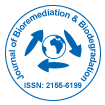हमारा समूह 1000 से अधिक वैज्ञानिक सोसायटी के सहयोग से हर साल संयुक्त राज्य अमेरिका, यूरोप और एशिया में 3000+ वैश्विक सम्मेलन श्रृंखला कार्यक्रम आयोजित करता है और 700+ ओपन एक्सेस जर्नल प्रकाशित करता है जिसमें 50000 से अधिक प्रतिष्ठित व्यक्तित्व, प्रतिष्ठित वैज्ञानिक संपादकीय बोर्ड के सदस्यों के रूप में शामिल होते हैं।
ओपन एक्सेस जर्नल्स को अधिक पाठक और उद्धरण मिल रहे हैं
700 जर्नल और 15,000,000 पाठक प्रत्येक जर्नल को 25,000+ पाठक मिल रहे हैं
में अनुक्रमित
- CAS स्रोत सूचकांक (CASSI)
- सूचकांक कॉपरनिकस
- गूगल ज्ञानी
- शेरपा रोमियो
- जे गेट खोलो
- जेनेमिक्स जर्नलसीक
- शैक्षणिक कुंजी
- जर्नल टीओसी
- अनुसंधान बाइबिल
- चीन राष्ट्रीय ज्ञान अवसंरचना (सीएनकेआई)
- उलरिच की आवधिक निर्देशिका
- कृषि में वैश्विक ऑनलाइन अनुसंधान तक पहुंच (अगोरा)
- RefSeek
- हमदर्द विश्वविद्यालय
- ईबीएससीओ एज़
- ओसीएलसी- वर्ल्डकैट
- एसडब्ल्यूबी ऑनलाइन कैटलॉग
- पबलोन्स
- चिकित्सा शिक्षा और अनुसंधान के लिए जिनेवा फाउंडेशन
- मियार
- आईसीएमजेई
उपयोगी कड़ियां
एक्सेस जर्नल खोलें
इस पृष्ठ को साझा करें
अमूर्त
The Role of Microorganisms in Distillery Wastewater Treatment: A Review
Terefe Tafese Bezuneh
Distilleries are one of the most polluting industries generating large volume of wastewater having a serious environmental concern. Distillery effluent is characterized by dark brown color, acidic pH, high temperature, low dissolved oxygen (DO), high biochemical oxygen demand (BOD) and chemical oxygen demand (COD). Distillery wastewater disposed onto the environment prior to treatment is hazardous and leads to soil and water pollution. The dark brown color of distillery effluent causes reduction of sunlight penetration, decreased photosynthetic activity and dissolved oxygen concentration in rivers, lakes and lagoons, hence becomes detrimental to aquatic life. It also causes reduction in soil alkalinity and inhibition of seed germination. Different physicochemical and biological methods have been investigated for the treatment of distillery effluents. In recent years, increasing attentions has been directed towards biological wastewater treatment methods. Bioremediation of wastewater using microorganisms is efficient and cost effective method. Microorganisms as bacteria, fungi, and algae have been shown to exhibit bioremediation activities mainly due to their production of complex and non-specific enzymatic systems capable of degrading various forms of pollutants from wastewater. The main concern of the present review is also to explore the role of microorganisms in wastewater treatment disposed from distilleries. Further, the mechanisms of color removal by fungi, bacteria and algae have also been incorporated.
विषयानुसार पत्रिकाएँ
- अंक शास्त्र
- अभियांत्रिकी
- आनुवंशिकी एवं आण्विक जीवविज्ञान
- इम्यूनोलॉजी और माइक्रोबायोलॉजी
- औषधि विज्ञान
- कंप्यूटर विज्ञान
- कृषि और जलकृषि
- केमिकल इंजीनियरिंग
- चिकित्सीय विज्ञान
- जीव रसायन
- नर्सिंग एवं स्वास्थ्य देखभाल
- नैदानिक विज्ञान
- नैनो
- पदार्थ विज्ञान
- पर्यावरण विज्ञान
- पशु चिकित्सा विज्ञान
- पादप विज्ञान
- बायोमेडिकल साइंसेज
- भूविज्ञान और पृथ्वी विज्ञान
- भोजन एवं पोषण
- भौतिक विज्ञान
- रसायन विज्ञान
- व्यवसाय प्रबंधन
- सामाजिक एवं राजनीतिक विज्ञान
- सामान्य विज्ञान
- सूचना विज्ञान
क्लिनिकल एवं मेडिकल जर्नल
- आणविक जीव विज्ञान
- आनुवंशिकी
- इम्मुनोलोगि
- एनेस्थिसियोलॉजी
- कार्डियलजी
- कीटाणु-विज्ञान
- कैंसर विज्ञान
- गैस्ट्रोएंटरोलॉजी
- ज़हरज्ञान
- तंत्रिका-विज्ञान
- त्वचा विज्ञान
- दंत चिकित्सा
- दवा
- नर्सिंग
- नेत्र विज्ञान
- नेफ्रोलॉजी
- नैदानिक अनुसंधान
- पल्मोनोलॉजी
- प्रजनन चिकित्सा
- बच्चों की दवा करने की विद्या
- भौतिक चिकित्सा एवं पुनर्वास
- मधुमेह और एंडोक्राइनोलॉजी
- मनश्चिकित्सा
- रुधिर
- रेडियोलोजी
- शल्य चिकित्सा
- संक्रामक रोग
- स्वास्थ्य देखभाल
- हड्डी रोग

 English
English  Spanish
Spanish  Chinese
Chinese  Russian
Russian  German
German  French
French  Japanese
Japanese  Portuguese
Portuguese  Telugu
Telugu